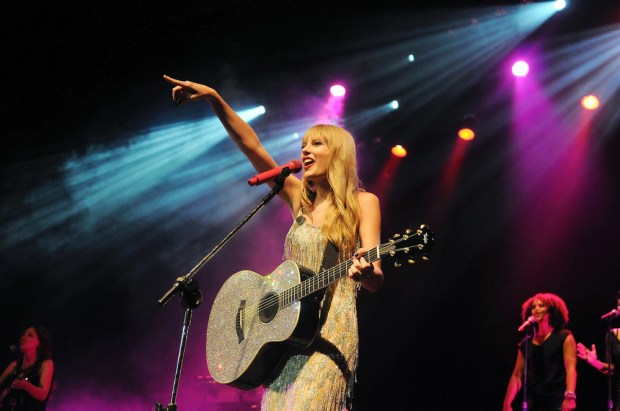What Can Taylor Swift Teach Us About Digital Ticketing?

Long gone are the days of waiting outside with other fans to score tickets to the boss rock show of the summer. Now, instead of sore feet and clothes that stink of cheap cigarettes by the time you get home with your paper prize, mobile devices and laptops offer more efficient ways to get past the admission gates.
As the general effort continues to replace analog record-keeping and commerce with digital methods, a look at how things are playing out with ticketing might offer some lessons to those making that journey, along with some signal of how the wider trend could further develop.
Recent Gains
Recent news shows the strides being made with digital ticketing.
Earlier this year, for instance, Google said that its Google Play mobile wallet would support tickets — and not just concert tickets, but also those used for airline trips, movies and sporting events. The Google Play upgrade also included lock screen notifications and a messaging field on the actual ticket, where users can get live alerts of real-time information that may affect plans the day of the event.
Meanwhile, digital ticketing appears likely to serve as fuel for the rise of the emerging eCommerce trend called contextual commerce – at least according to Azita Habibi, business development lead at Braintree, a payment services firm owned by PayPal. In recent conversations with PYMNTS, Habibi pointed to event ticketing as an promising area for contextual commerce growth.
Consumers could go to sites that aggregate concert dates — either local or for vacation destinations — and, in Habibi’s words, “go end to end” from discovery to purchase. Sure, the concert ticketing industry is dominated by a “couple of large players,” she said, but there remains enough fragmentation to make the sector an appealing target for more contextual commerce.
Digital Stumbles
Digital ticketing, however, can also bring downsides that threaten revenue and brand reputations. In the pop music world, Taylor Swift’s recent and ongoing Reputation Stadium Tour provides an example of that, one that might remain little known outside music industry circles.
Swift still commands one of the most lucrative personas in pop music, and a relatively positive reputation in an industry where singers and musicians are regularly booted from their pedestals by missteps or media ire. But the role that digital ticketing played during the early stages of that tour left some marks on the Taylor Swift brand — according to one analysis, in fact, the experience stands as the “current best example of how not to sell tickets on a large tour.”
Here’s what happened, according to a detail account from Digital Music News: The tour used Ticketmaster Verified Fan, technology that is supposed to prevent automated bots from buying up tickets, to help ensure that real Taylor Swift fans were the ones buying them. Verified Fan is a multiple-step ticket-buying process. Fans sign up in advance to receive a code that then, at a later date, allows them to pass Ticketmaster’s online gates to buy the actual tickets.
The chances of landing better seats were reportedly boosted if fans also bought Taylor Swift merchandise at the same time. For instance, a fan who agreed to buy one of her albums (or whatever you prefer to call them these days) could be offered a chance to buy a better ticket. “Many fans describe doing this, only to then be offered $1,200 tickets,” the report said. “Many others are crying foul saying they waited hours and hours to get a Verified Fan code, only to be shut out online.”
Observers have blamed that system, and the resulting fan backlash, for the fact that some of the shows on the recent Taylor Swift tour were not sold out, a contrast to her previous global concert tour for “1989.” Ticketmaster, for its part, said Verified Fan worked as it was supposed to.
Digital Success
That digital ticket experience demonstrates how thing can go wrong if there are too many complications, or if consumers feel they are being exploited. Another recent digital ticketing case study paints a more positive picture of how going from analog to digital can bring more rewards than problems.
The LA Auto Show runs for 10 days. For the 2017 event last December, organizers decided to replace a “clunky” eight-step checkout process that discouraged consumers from completing purchases — they often just bought tickets at the door on the day they attended, tolerating long lines — with an Eventbrite system that was not only mobile-friendly, but required just three steps to check out.
“Now customers can see an advertisement for the LA Auto Show and buy a ticket in under 60 seconds,” said Mike Asner, the show’s senior director of marketing and ticketing. “The process was finally seamless.”
Online ticket sales increased 37 percent year over year in 2017, he said, with 57 percent of those online tickets bought by consumers 45 years old or younger — which he called a “significant shift for the show.”
The digital ticketing improvement also enabled the auto show to better know its customers. “For so long, we didn’t know who was coming to the show, because a majority of people would buy tickets at the door,” Asner said. By selling more tickets online, the show not only collected more customer contact information, but added custom questions at checkout to gather even more data about ticket buyers, he said.
Digital ticketing has obviously come a long way, leaving those outdoor lines and the (mostly) lovable ne’er-do-wells standing in them a relic of pop culture. The best ways to do digital ticketing are still being found, and more developments are certain as more of the economy moves from analog to digital.
